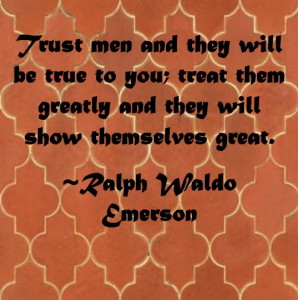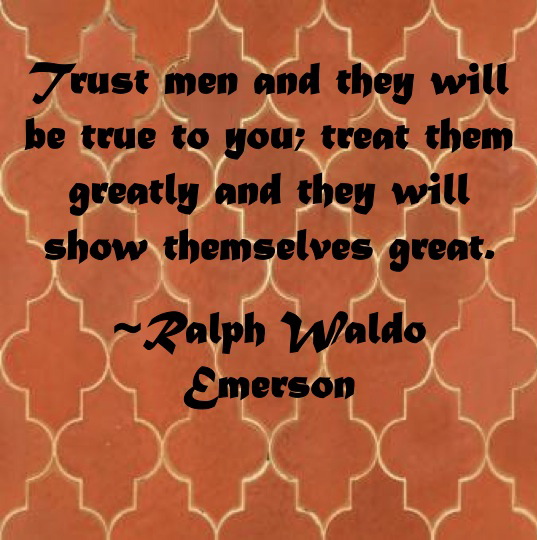Mary Ann Clements kindly asked to feature the following interview with me in the “Partnership People” section of her great website, Partnership Matters. She created the site to address “a rhetoric [in international development] which prioritises partnership with local organisations, without many practitioners [paying] sufficient attention to what ‘good partnership work’ actually entails.”
***
Tell me a bit about your experience with partnership working in international development.
What part of this work does not include partnership? It’s the foundation of all that we do, but sadly it’s one of the most under-valued aspects of effective programming. Relationships are considered so squishy, touchy, feely, so subjective, that the results- and expertise-driven people that make up our industry often dismiss their importance.
I’ve served with many international organizations and foundations over the years, focusing on organizational development and learning. And, by far, the best ones to work with are those that care about getting partnerships right.
My blog, how-matters.org, was born out of my frustrations with the limitations of donor-controlled, project-based funding. The site focuses on what’s needed to build partnerships that place community-driven development initiatives at the center.
What do you think are the key things that need to be in place for a partnership to work well?
 An embrace of paradox, patience, and most importantly humility, which admittedly doesn’t come easy to folks who feel they have to answer to donors breathing down their necks.
An embrace of paradox, patience, and most importantly humility, which admittedly doesn’t come easy to folks who feel they have to answer to donors breathing down their necks.
Humility means that you may not always have the answers, or even all the information. Who is making decisions about how funds are invested? Who is setting the agenda? Whose priorities outrank others’? Who defines what constitutes as “success”? When we answer these questions honestly, humility must also mean giving up control.
In essence, you cannot ask yourself enough, “Who’s driving this initiative?” It’s ownership that leads to sustainability. We’ve known this for decades now in international development, but we still have not aligned our policies, programs, and practices.
Can you tell me about an experience you’ve had which you felt was partnership working at its most effective?
Last month I got a call from a former colleague. She wanted to share with me the progress of an initiative that had started about four or five years ago. At that time, I had about 25 Malawian grassroots organizations in my portfolio. They ranged from more nationally-focused child advocacy organizations, to emerging groups of citizens organized around their concern for kids, but with few financial resources. The foundation I was working with at the time was providing small grants to the organizations, but I saw a tremendous opportunity for these groups to learn from and lean on each other.
But I was sat in California, not Malawi, and so I knew it was not up to me to form a network. Rather, the only thing needed from me was to help this group of devoted and driven people come together. So at our next partner meeting in Lilongwe, I came, greeted everyone, and then left the room until the end of the day. My suggestion? Tell me what you’d like to do as a group. We can help you get started and then I’ll help find more resources.
An extensive (and expensive) proposal was born out of this initial meeting. The foundation only had the budget to fund a portion of the planned activities of exchange visits, mentoring, and peer-led trainings, but initial activities were up and running by the time I handed over the portfolio a year later.
My colleague called to tell me that the partner network is a key part of the foundation’s work in Malawi, but more importantly, it’s been wholly taken up by the grantees.
“You should see the network in the north today, Jen! You wouldn’t believe how they’re helping each other,” she shared. “All I could think about when I was hearing the update today was how you had the courage to hand over that partner meeting, so many years ago.”
So sometimes, I guess the most effective partnership strategy is to get out of the way.
Are you willing to share an example of something that you were involved in that didn’t go well?
Where to begin? Ha! I try to write about these from time to time on my blog, but need to do more of this. (See example here.)
A story I’ve always wanted to write about, but have not yet, is about managing (or trying to manage) my first big research project – international and local consultants, six districts, the rainy season, 13,000 survey questionnaires, my boss on home leave, and no control over the budget. The “business” of aid was at play and while much of it was out of my control, partnerships suffered. A seasoned colleague would just chuckle when I shared the latest drama, and refer to it as “paying your dues.” I did my best to keep the lines of communication open between all parties, but, in retrospect, I should have asked for help sooner. I was over my head.
Unfortunately, I think many budding aid workers often find themselves in similar positions, without the necessary support or autonomy. That’s why it’s important for me to help my colleagues, peers, and the next generation of do-gooders explore the “soft” skills of how to do this work better and quicker than I did. One of my mantras – it’s okay to make new mistakes, but not old ones.
People will disappoint you from time to time. You will also let people down. And as in our personal relationships, we have to re-commit every day to making them work. Relationships within international development are no different.
What are the key things you think need to happen to improve partnership practice across the sector?
We need alternative funding mechanisms that enable more decentralized control of resources; and we need more experts in building functional and practical client/beneficiary feedback mechanisms, i.e. people who can close the loop and create the institutional incentives to ensure it continues.
Most importantly, we need to find the courage and honesty to talk about and confront aid’s most difficult topics – race, power and privilege. It’s time to shine a light on what’s hiding behind and interfering with our good intentions.
***
Check out Mary Ann’s partnership reflection guide and great collection of resources at partnershipmatters.org. (2020 update: And now at healingsolidarity.org!)
***
Related Posts
Don’t you talk about my…that way…
How would you measure the strength of a partnership?
How to build strong relationships with grassroots organizations, Part 1 of 3


Pingback: 4 ways toxic workplaces are harming the social good sector |